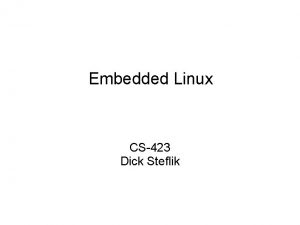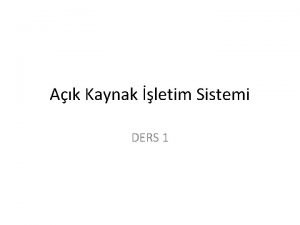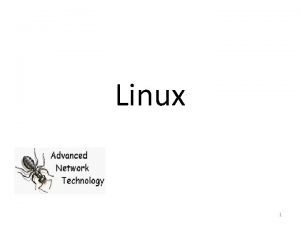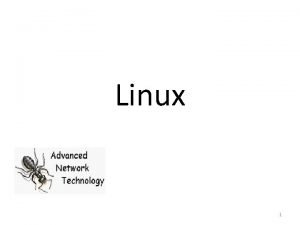Linux vs Windows Single Users vs Multiple Users






- Slides: 6

Linux vs Windows

Single Users vs. Multiple Users vs. Network Users Windows Linux • Windows was designed according to the “one computer, one desk, one user” vision of Microsoft’s cofounder Bill Gates. • Linux borrows its philosophy from UNIX. When UNIX was originally developed at Bell Labs in the early 1970 s, it existed on a PDP-7 computer that needed to be shared by an entire department.

The Monolithic Kernel and the Micro-Kernel Windows Linux • Windows works off a microkernel design. The kernel provides a small set of services and then interfaces with other executive services that provide process management, input/output (I/O) management, and other services • Linux, for the most, part adopts the monolithic kernel architecture; it handles everything dealing with the hardware and system calls.

Separation of the GUI and the Kernel Windows Linux • Windows developers integrated the GUI with the core operating system. One simply does not exist without the other • Linux (like UNIX in general) has kept the two elements—user interface and operating system —separate. The X Window System interface is run as a user-level application, which makes it more stable. If the GUI (which is complex for both Windows and Linux) fails, Linux’s core does not go down with it.

The Registry vs. Text Files Windows Linux • Windows Registry as the ultimate configuration database—thousands upon thousands of entries, only a few of which are completely documented. Windows Registry system is, at best, difficult to manage • Linux does not have a registry. configuration files are most often kept as a series of text files Many applications are now coming bundled with GUIbased configuration tools to alleviate some of these problems. So you can do a basic setup easily and then manually edit the configuration file whenyou need to do more complex adjustments.

Domains and Active Directory Windows Linux • Windows NT domain controller model. Primary Domain Controllers (PDCs), Backup Domain Controllers (BDCs), and their synchronization. • Linux does not use a tightly coupled authentication/ authorization and data store model the way that Windows does with Active Directory. Instead, Linux uses an abstraction model that allows for multiple types of stores and authentication schemes to work without any modification to other applications. This is accomplished through the Pluggable Authentication Modules (PAM)











